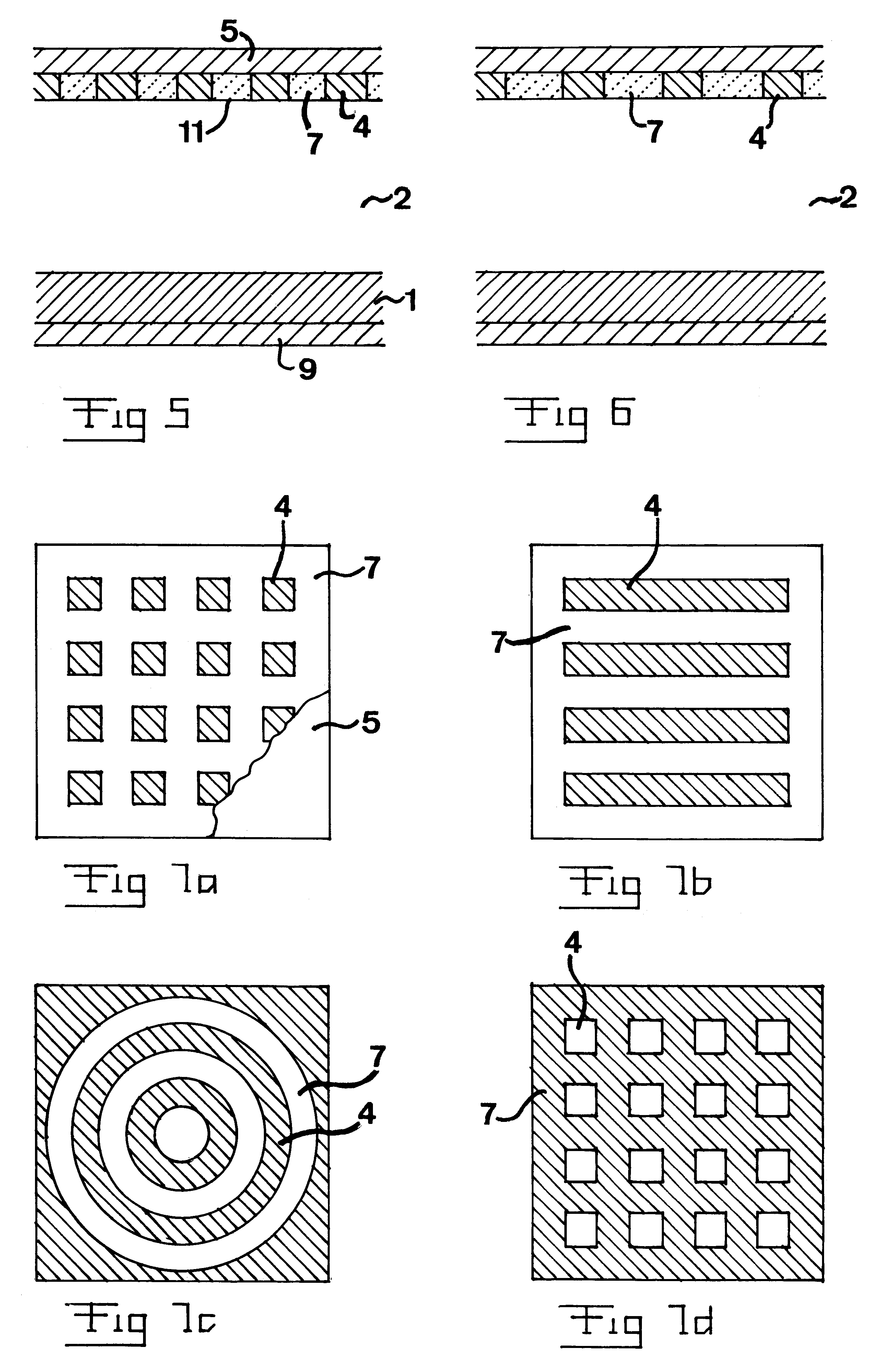Method concerning a junction barrier Schottky diode, such a diode and use thereof
a technology of junction barrier and diode, which is applied in the direction of diodes, semiconductor devices, electrical devices, etc., can solve the problems of low leakage current, large loss of sic advantage, and huge increase in static operation losses
- Summary
- Abstract
- Description
- Claims
- Application Information
AI Technical Summary
Benefits of technology
Problems solved by technology
Method used
Image
Examples
Embodiment Construction
For better understanding the idea of the present invention a conventional Schottky diode is firstly shown in FIG. 1. This Schottky diode of SiC has a highly doped n-type substrate layer 1 and a low doped n-type drift layer 2 on top thereof. A metal layer 3 forming a Schottky contact to the drift layer 2 is applied on top of the latter. If this Schottky diode is made of SiC and for comparatively low blocking voltages, for instance below 2000 V, the drift layer 2 may be made very thin resulting in very low on-state losses, but also in a negative temperature coefficient for the current densities normally of interest. The cross-over point at which the temperature coefficient changes from negative to positive may be lowered by making the drift layer thicker, which will then, as already stated above, substantially increase the on-state losses of the diode.
The present inventors have found that a junction barrier Schottky diode as illustrated in FIG. 2 opens new possibilities to move said c...
PUM
 Login to View More
Login to View More Abstract
Description
Claims
Application Information
 Login to View More
Login to View More - R&D
- Intellectual Property
- Life Sciences
- Materials
- Tech Scout
- Unparalleled Data Quality
- Higher Quality Content
- 60% Fewer Hallucinations
Browse by: Latest US Patents, China's latest patents, Technical Efficacy Thesaurus, Application Domain, Technology Topic, Popular Technical Reports.
© 2025 PatSnap. All rights reserved.Legal|Privacy policy|Modern Slavery Act Transparency Statement|Sitemap|About US| Contact US: help@patsnap.com



